Last updated on
Transform your old, worn-out sofa into a stunning piece of furniture with reupholstered cushions – learn how in this informative and engaging article!
Have you ever walked into a room and felt like something was just off? Maybe the colors clashed, or the lighting was too dim. Or perhaps your eyes were drawn to that old sofa with sagging cushions and worn-out fabric.
It’s an eyesore that you’ve been meaning to replace for ages, but somehow it’s always slipped down on your priority list.
Well, let me tell you a story about my own experience with an old sofa. It was a hand-me-down from my grandparents, and while it had sentimental value, it looked like it had seen better days.
The cushions were lumpy and uncomfortable, and the once-beautiful floral pattern on the fabric had faded into oblivion.
I knew I needed to do something about it but didn’t want to spend a fortune on buying new furniture. That’s when I stumbled upon reupholstering – the process of replacing or repairing old fabric on furniture pieces.
After some research and lots of trial-and-error (and maybe some frustration), I finally managed to breathe new life into that old sofa of mine! And let me tell you – there’s nothing more satisfying than seeing something transform right before your very eyes.
So if you’re in the same boat as I was with that drab-looking sofa taking up space in your living room – fear not! In this article, we’ll dive deep into everything there is to know about reupholstering sofa cushions – from why it’s worth considering to how to do it yourself (or finding someone who can). So grab a cup of coffee (or tea) and get ready for some serious inspiration!
Key takeaways:
- Assess cushion condition: repair or replace?
- Choose durable, color/pattern matching upholstery fabric.
- Measure and cut fabric accurately for perfect fit.
- Remove old upholstery carefully, preserving foam if possible.
- Sew cushion covers correctly, attach securely to sofa frames.
Table of Contents
Assessing Cushion Condition
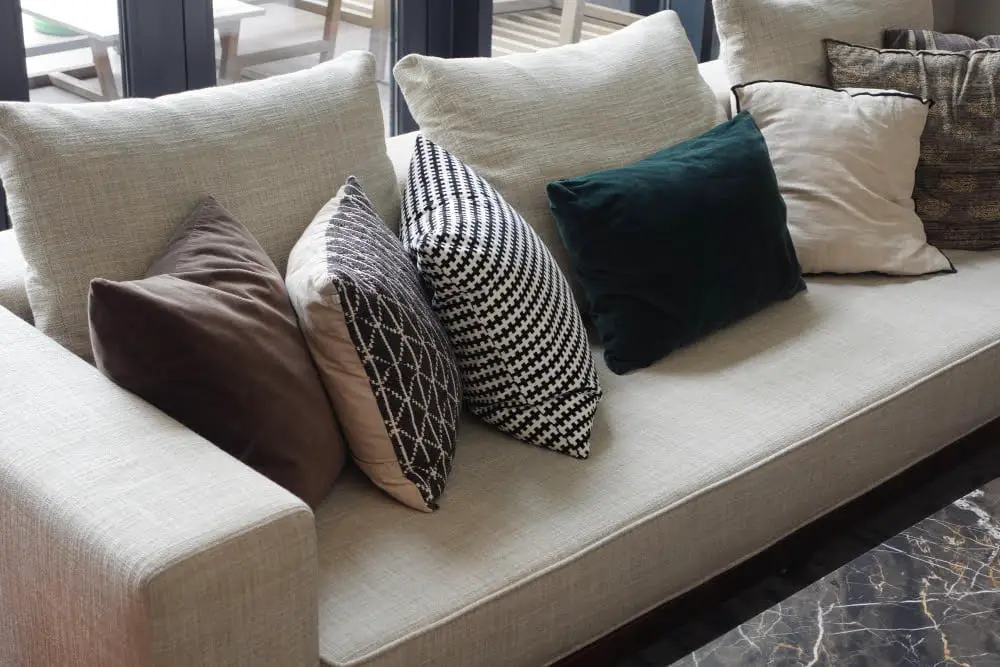
Before you start reupholstering your sofa cushions, it’s important to assess their condition. This will help you determine whether the cushions need to be replaced entirely or if they can simply be repaired and recovered with new fabric.
To do this, take a close look at each cushion and check for any signs of damage such as tears, holes or flattened areas. If the foam inside is still in good shape but has lost its firmness over time, it may just need some extra stuffing added to plump it up again.
If there are major structural issues with the cushion itself (such as broken springs), then replacing them entirely might be necessary. However, if only minor repairs are needed (like fixing a small tear), then reupholstering could save you money while giving your furniture a fresh new look.
Assessing cushion condition is an essential first step in any upholstery project – so take your time and make sure that everything is in order before moving on to choosing fabrics!
Choosing Upholstery Fabric
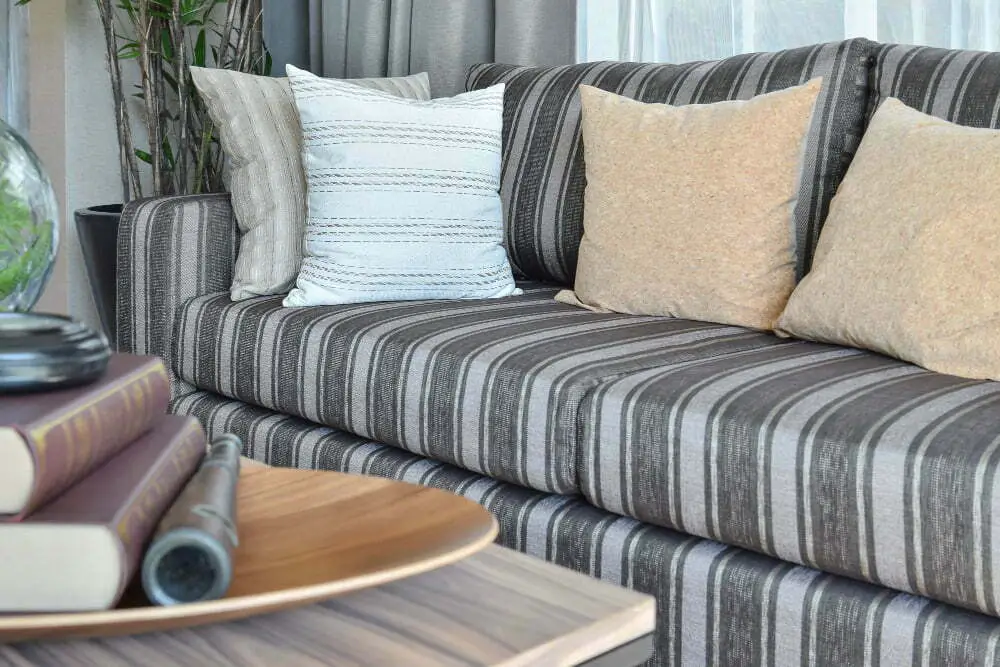
Once you’ve assessed the condition of your sofa cushions, it’s time to choose the right upholstery fabric. This is where things can get a little overwhelming – there are so many options out there! But don’t worry, we’re here to help.
First and foremost, consider durability. If you have kids or pets (or both), then you’ll want something that can withstand wear and tear.
Look for fabrics with high rub counts – this refers to how much abrasion they can take before showing signs of wear.
Next up is color and pattern. This is where personal preference comes into play – do you want something bold and eye-catching or more subtle? Keep in mind that darker colors tend to hide stains better than lighter ones.
Texture also plays a role in choosing upholstery fabric. Do you prefer smooth or textured fabrics? Velvet may be luxurious but may not hold up as well over time compared to other materials like microfiber or leather.
Lastly, think about the overall style of your room when selecting an upholstery fabric for your sofa cushions – will it complement existing decor elements?
Choosing the right upholstery fabric takes some consideration but once done correctly will give new life into any old furniture piece like my own hand-me-down from my grandparents’ sofa which now looks brand new after reupholstering its cushion covers with beautiful floral patterns on durable yet soft-to-touch velvet material!
Measuring and Cutting Fabric
Once you’ve chosen the perfect upholstery fabric for your sofa cushions, it’s time to measure and cut it. This step is crucial in ensuring that your new cushions fit perfectly on your furniture piece.
Firstly, remove the old cushion covers from the foam inserts and lay them flat on a large surface. Use a measuring tape to take accurate measurements of each cushion cover – length, width, and depth.
Make sure to add an extra inch or two for seam allowances.
Next up is cutting out the new fabric pieces according to these measurements using sharp scissors or a rotary cutter (if you have one). Be careful not to cut too much off as this can lead to ill-fitting covers.
If you’re working with patterned fabric like stripes or florals, make sure that they are aligned correctly before cutting out each piece. You don’t want wonky patterns ruining all of your hard work!
Once all pieces are cut out accurately with precision; sew them together following instructions carefully so that they fit snugly over their respective foam inserts without any wrinkles or sagging areas. Measuring and cutting may seem like tedious tasks but trust me when I say this – taking care during these steps will ensure beautiful results in reupholstering those old sofa cushions!
Removing Old Upholstery
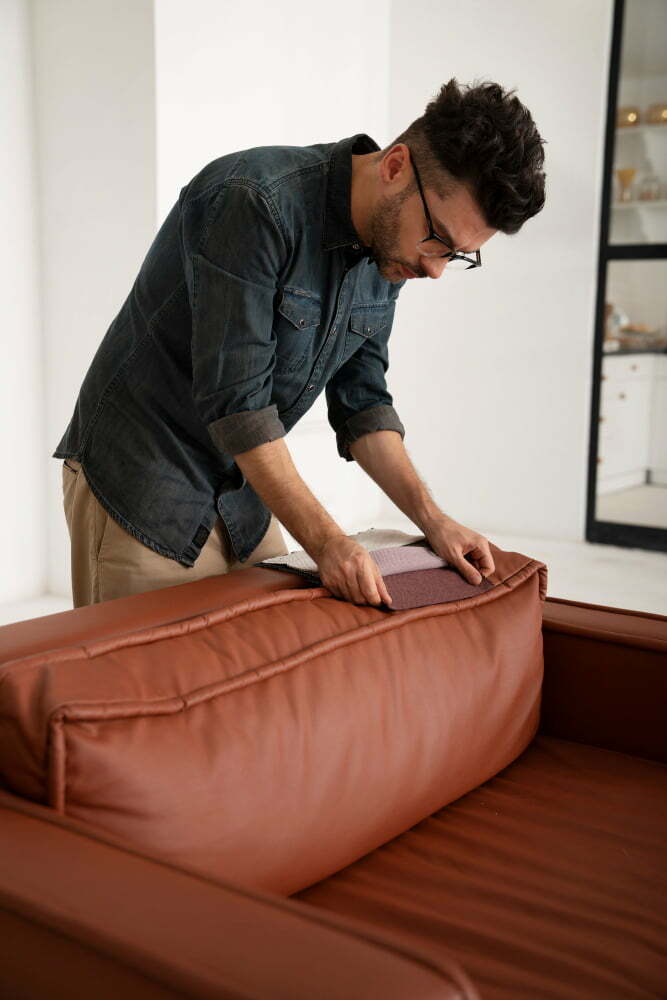
Once you’ve assessed the condition of your sofa cushions and chosen new upholstery fabric, it’s time to remove the old fabric. This can be a bit of a tedious process, but trust me – it’s worth it in the end! Start by removing any buttons or decorative elements from your cushion covers.
Then use pliers to pull out any staples or tacks that are holding down the old upholstery. Be sure to wear gloves during this step as there may be sharp edges.
Once all staples and tacks have been removed, carefully peel away the old fabric from each cushion piece by piece. Take note of how each piece was put together so you can replicate this when attaching new upholstery later on.
If there is foam padding underneath your existing cushions that is still in good condition, leave them intact and simply replace their covers with fresh ones made from your chosen material. Removing old upholstery may seem like an intimidating task at first glance but taking things one step at a time will make everything much more manageable!
Sewing Cushion Covers
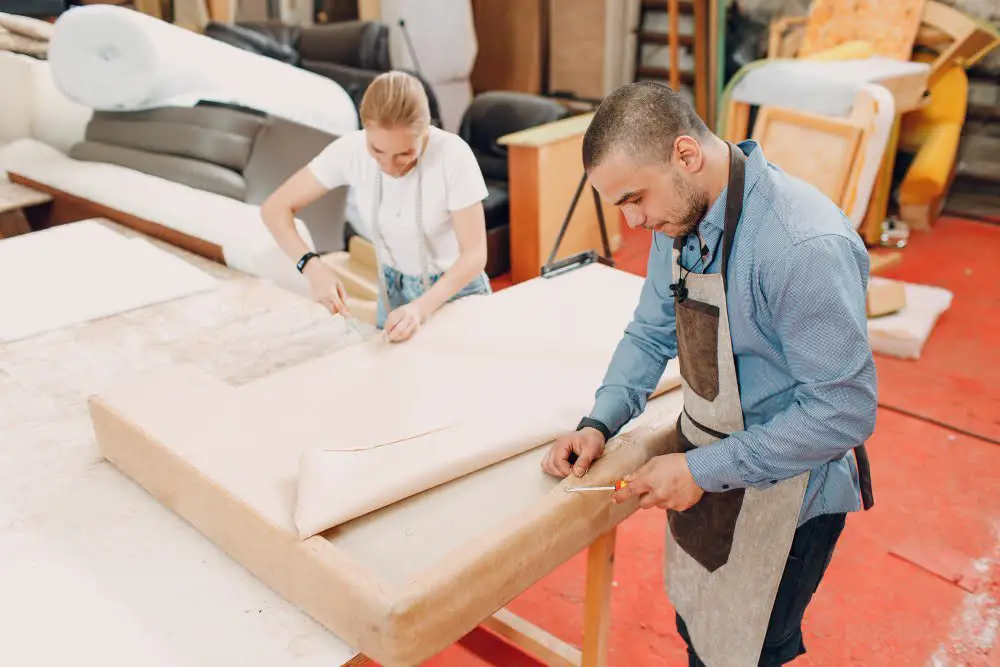
Once you have your fabric cut to size, it’s time to start sewing the cushion covers. This step can be a bit tricky if you’re not familiar with sewing, but don’t worry – practice makes perfect! Firstly, place the two pieces of fabric together (with their right sides facing each other) and pin them in place along three edges.
Then sew these edges together using a straight stitch on your sewing machine or by hand if you prefer. Next up is creating an opening for inserting the cushion foam.
You can do this by leaving one edge open or adding a zipper or buttons for easy removal later on. Turn the cover right side out and insert your foam cushion into it through the opening that was left earlier.
Once everything is in place and looking good, simply close up that last edge either with more stitching or using those zippers/buttons we mentioned earlier! Sewing may seem daunting at first but trust me when I say that once you get started it becomes easier than expected! And remember – there are plenty of online tutorials available to help guide beginners through every step of this process so don’t hesitate to seek assistance where needed!
Attaching New Upholstery
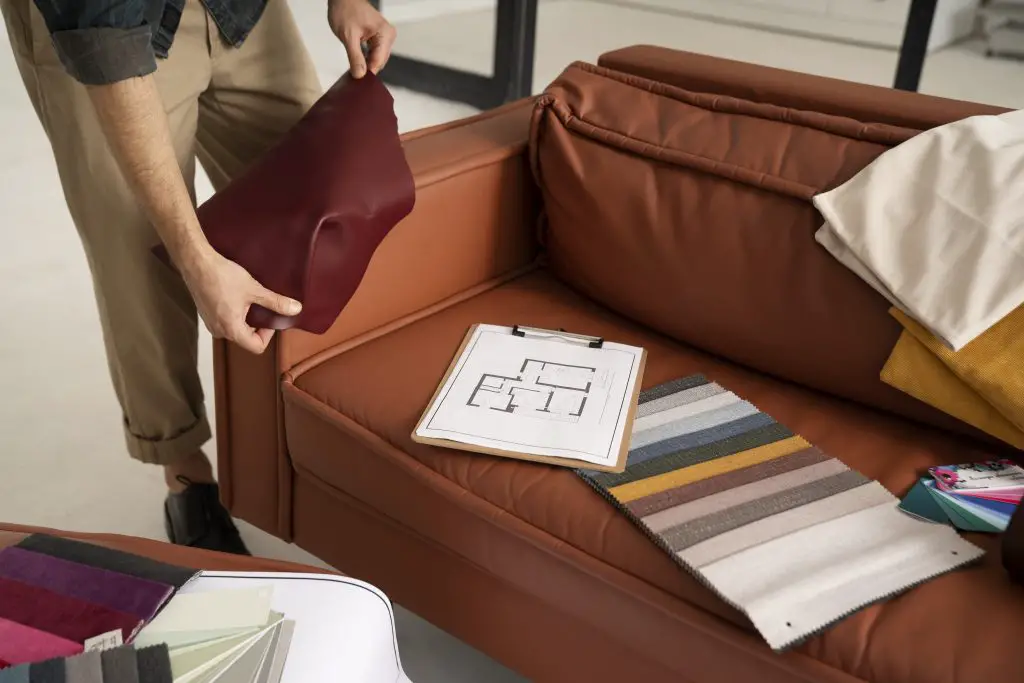
Once you’ve removed the old upholstery and sewn your new cushion covers, it’s time to attach them to your sofa. This step can be a bit tricky, but with some patience and attention to detail, you’ll have beautiful new cushions in no time.
Firstly, place the cushion on top of the fabric cover with its bottom facing up. Then fold over one side of the fabric so that it covers half of the cushion’s width.
Secure this side by stapling or tacking along its edge.
Next, pull tightly on opposite sides of your fabric cover while smoothing out any wrinkles or bumps as you go along until they are taut around all edges without being too tight that they distort their shape.
Once everything is smooth and evened out nicely across both sides (top/bottom), staple/tack down each remaining edge securely before trimming off excess material from around these areas using scissors if necessary – leaving enough allowance for folding under neatly later when finishing touches are added!
Repeat this process for each individual seat cushion until all have been attached securely onto their respective frames – then sit back and admire how much better everything looks now!
Finishing Touches
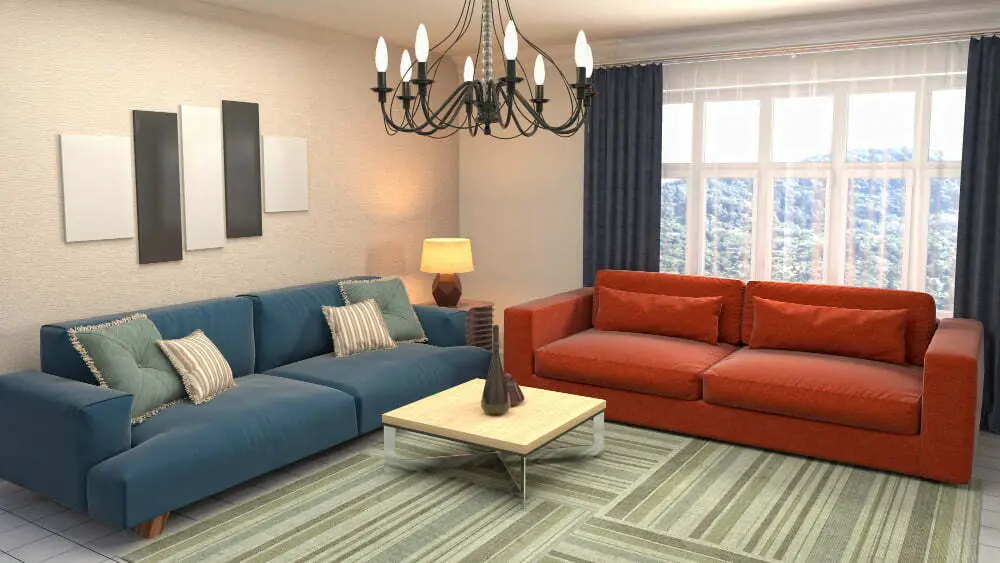
After all the hard work of reupholstering your sofa cushions, it’s time for the finishing touches. This is where you can add some personal flair and make your furniture truly unique.
One way to do this is by adding decorative trim or piping around the edges of your cushions. This not only adds a pop of color but also helps to define the shape and structure of each cushion.
Another option is to add buttons or tufting for a more classic look. Tufted cushions have been popular for centuries, and they’re still just as stylish today! You can use matching fabric-covered buttons or opt for something contrasting – either way, it’s sure to make a statement.
Don’t forget about throw pillows! These are an easy way to tie in other colors from around your room while also providing extra comfort. Mix-and-match patterns and textures until you find what works best with your new upholstery.
With these finishing touches complete, step back and admire all that hard work paying off – now you have beautiful new sofa cushions that will last years longer than their worn-out predecessors!




